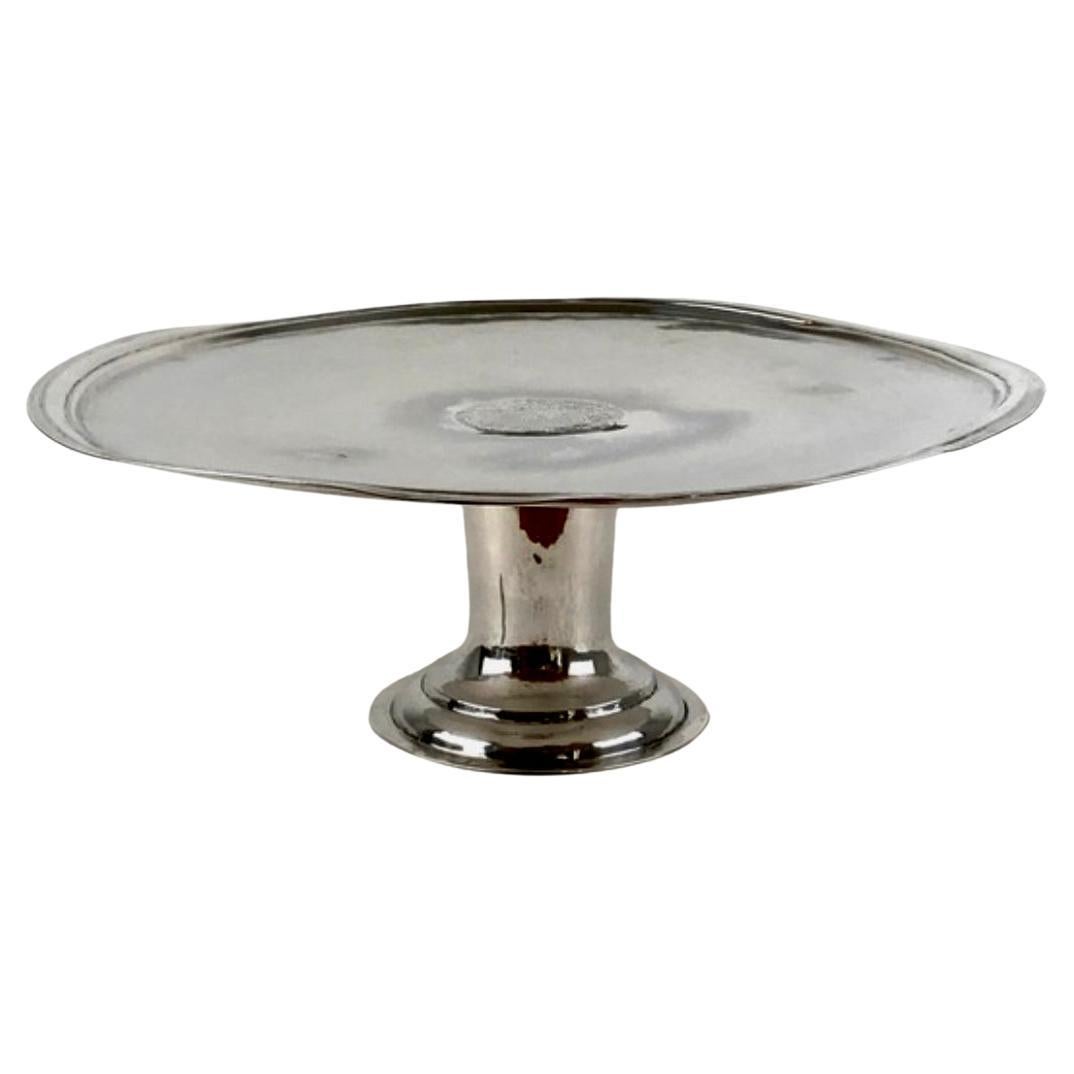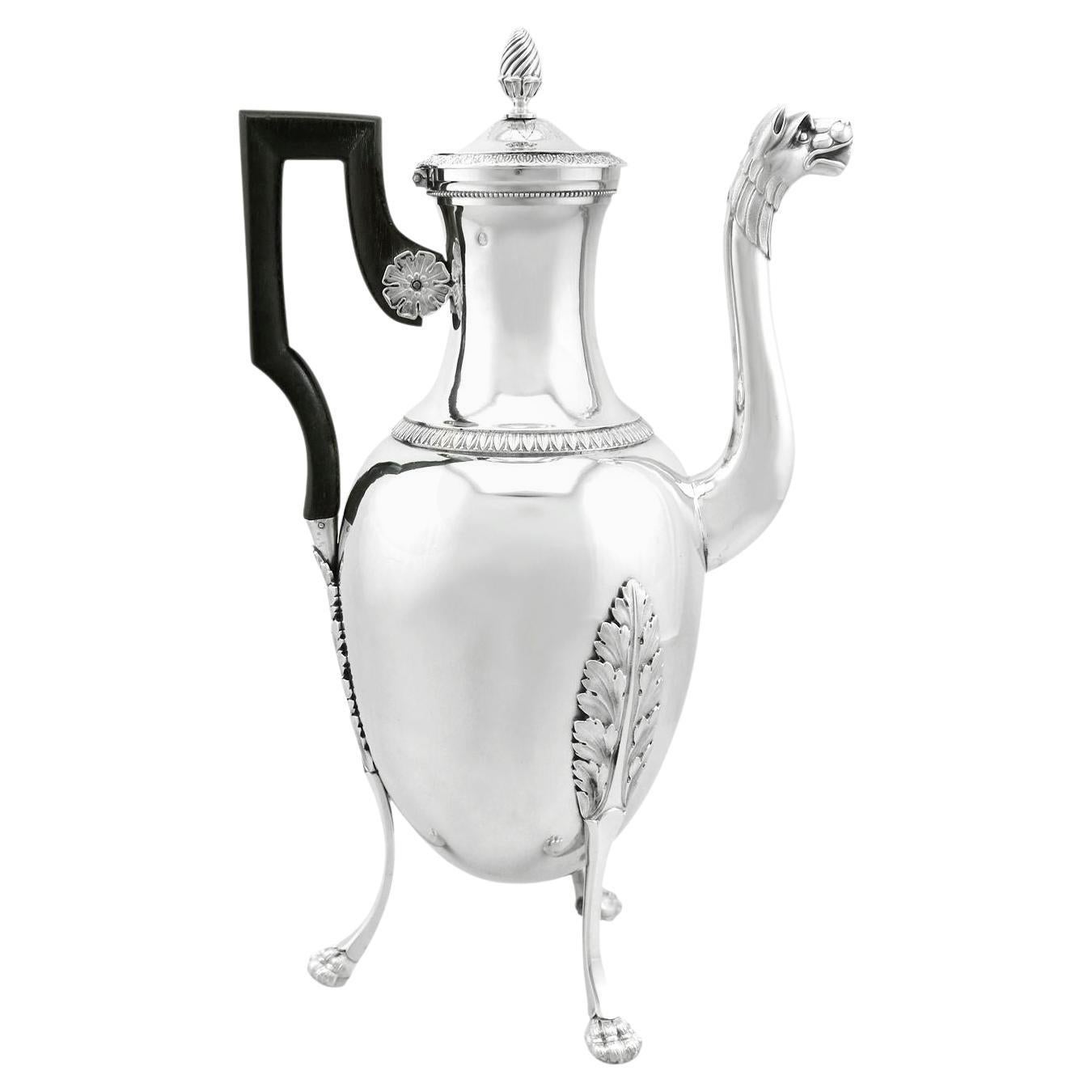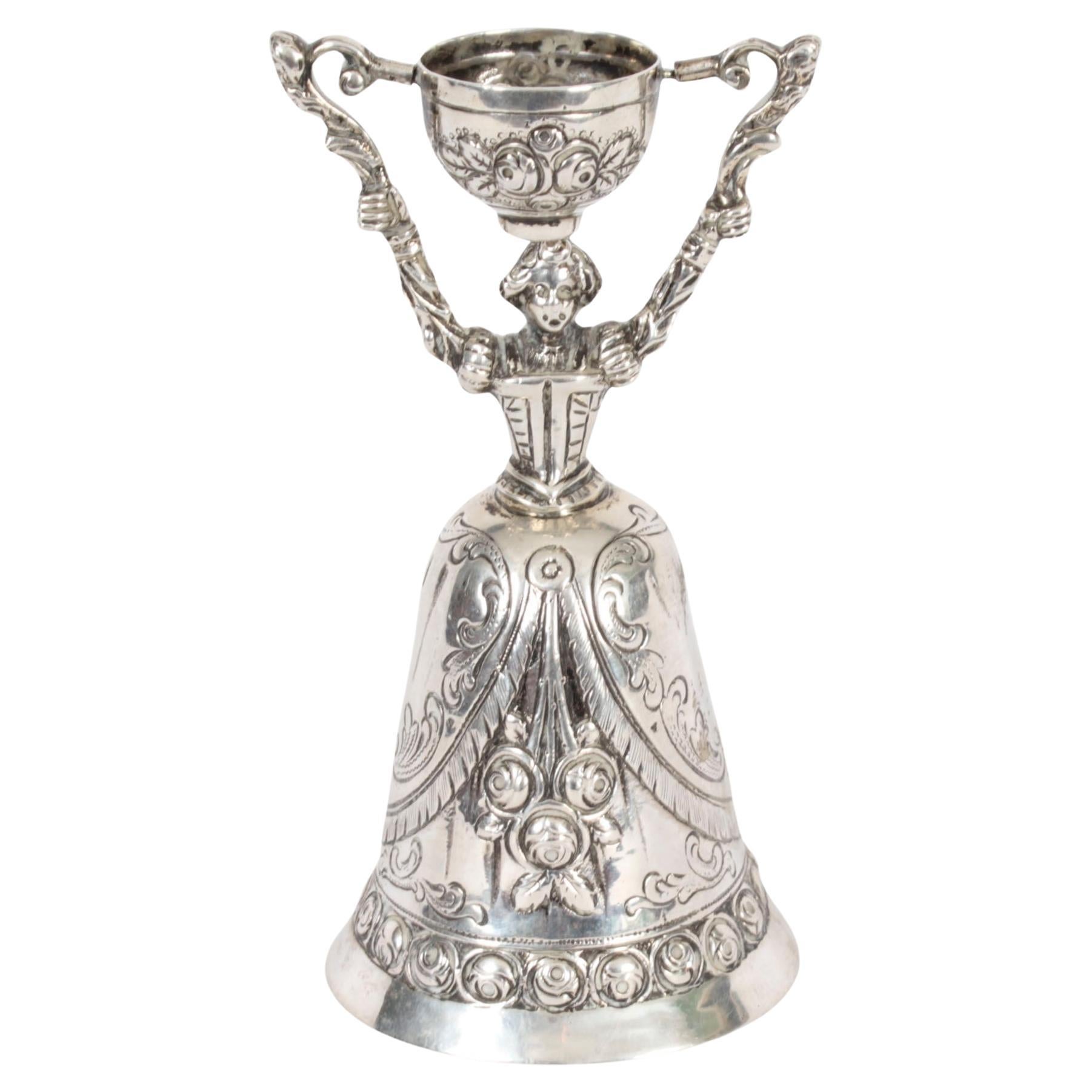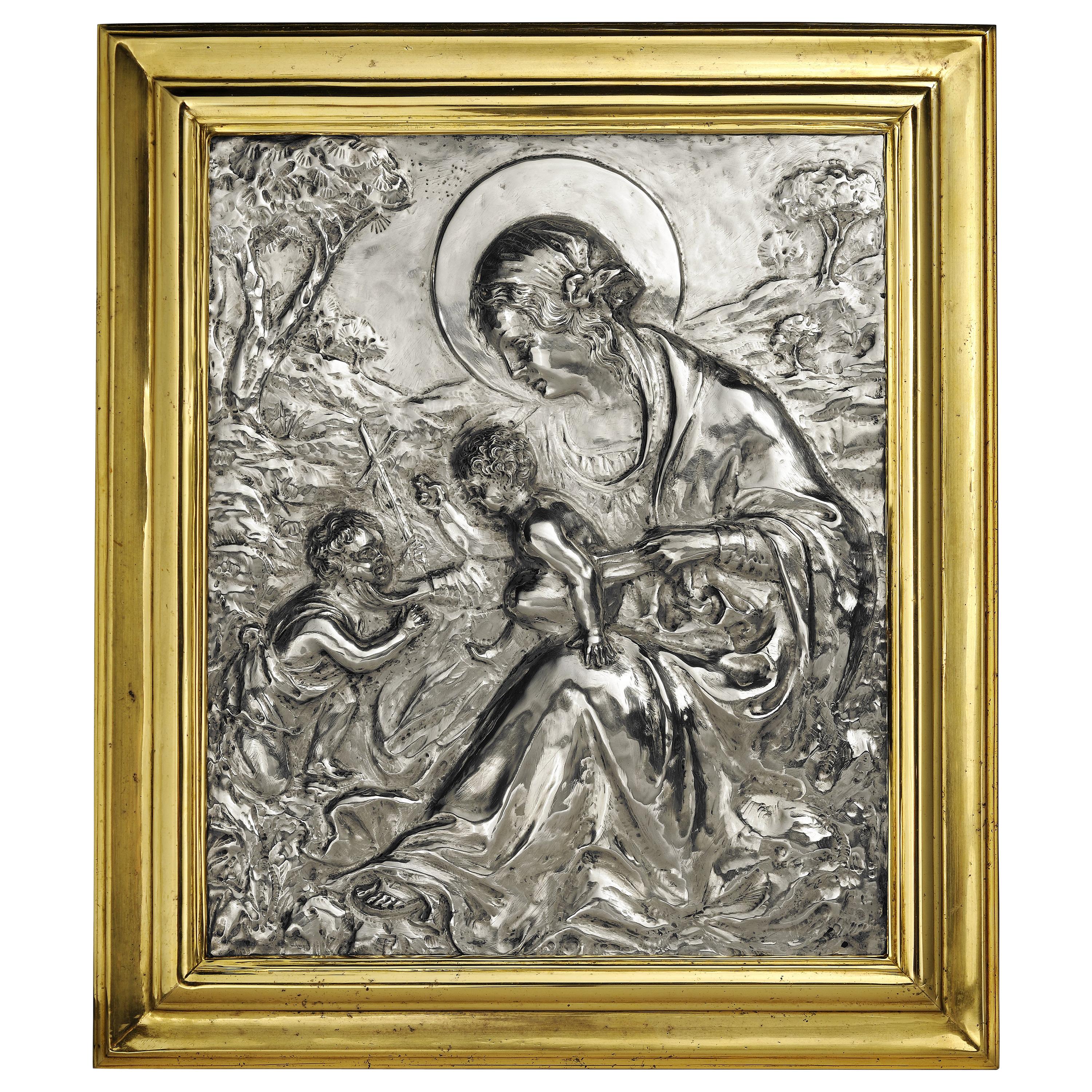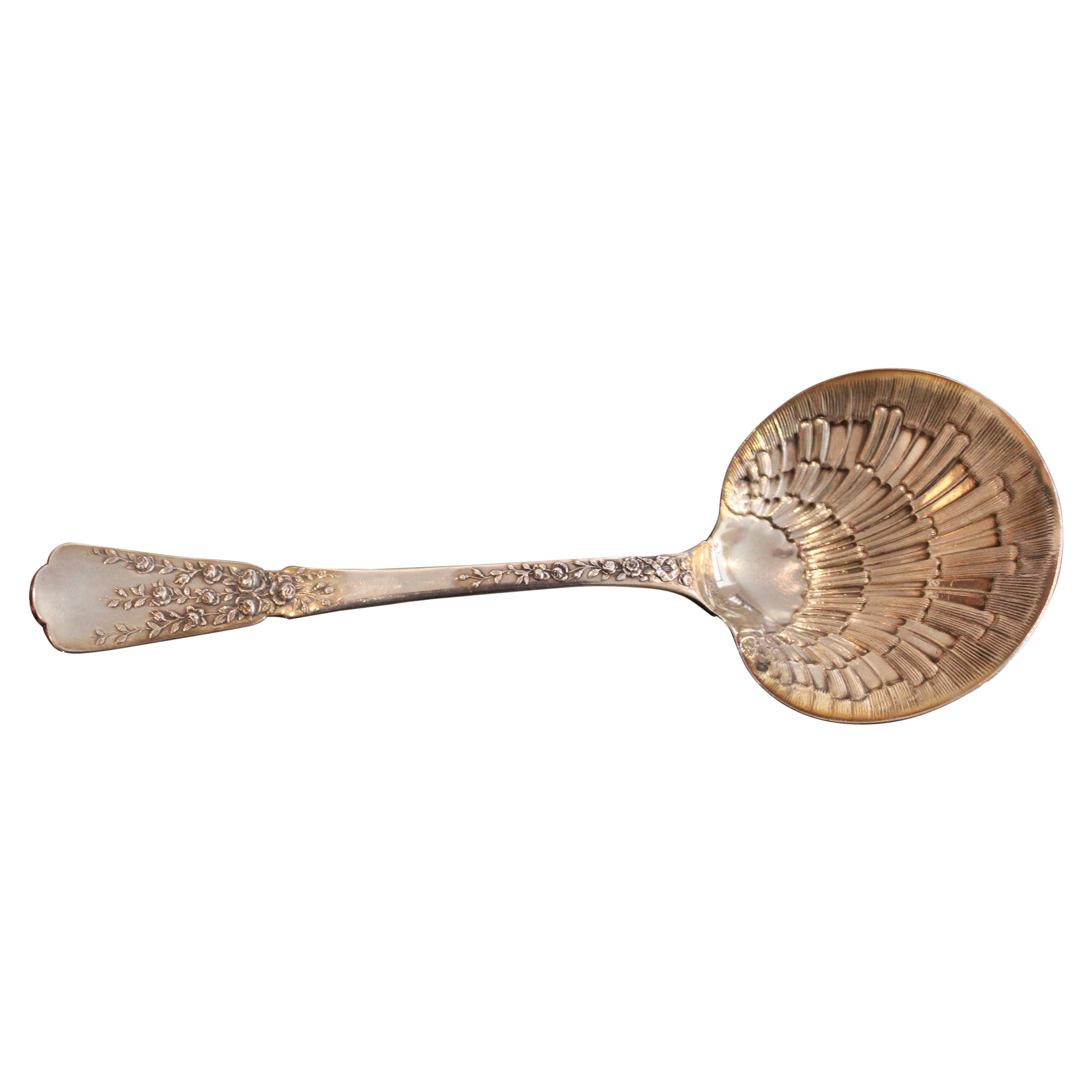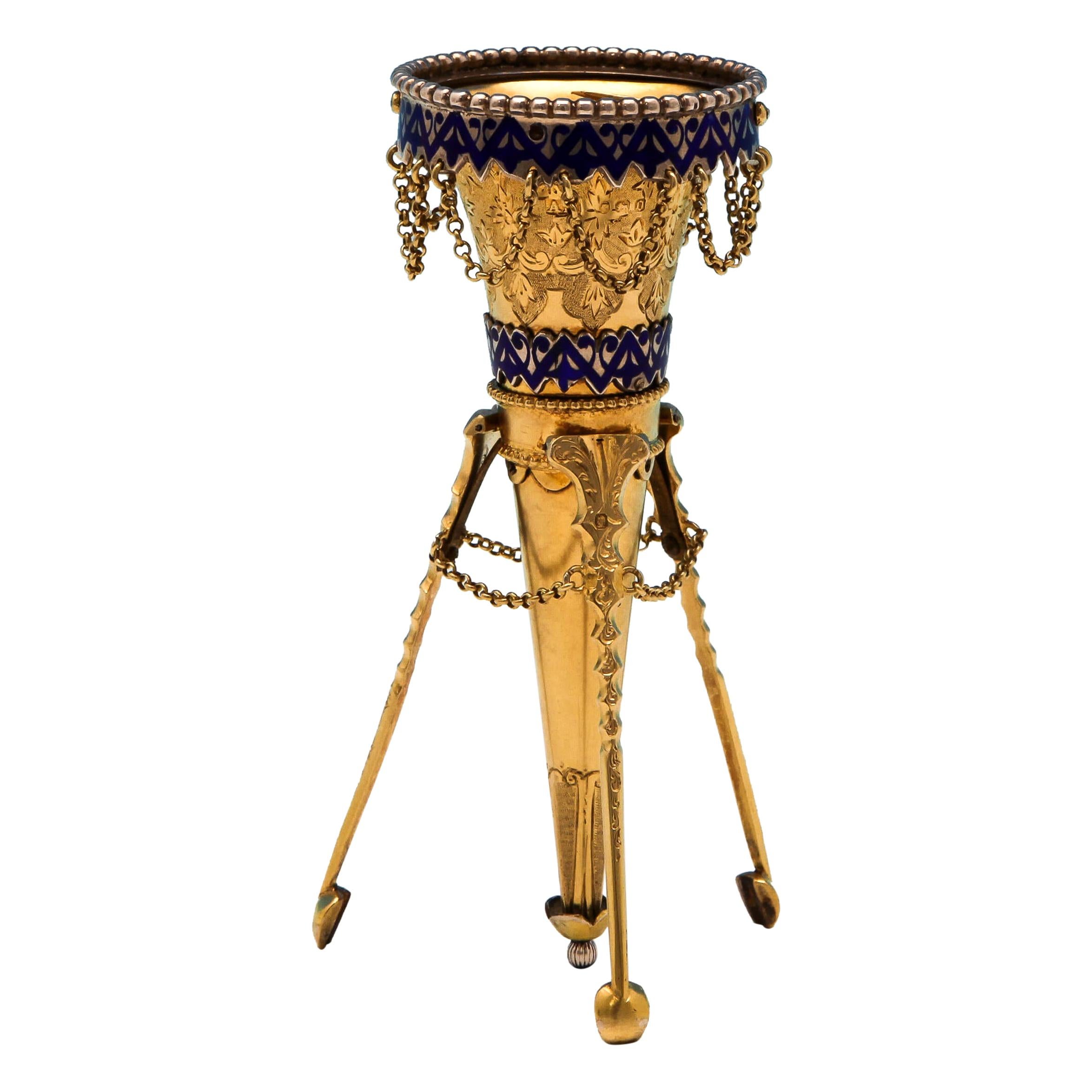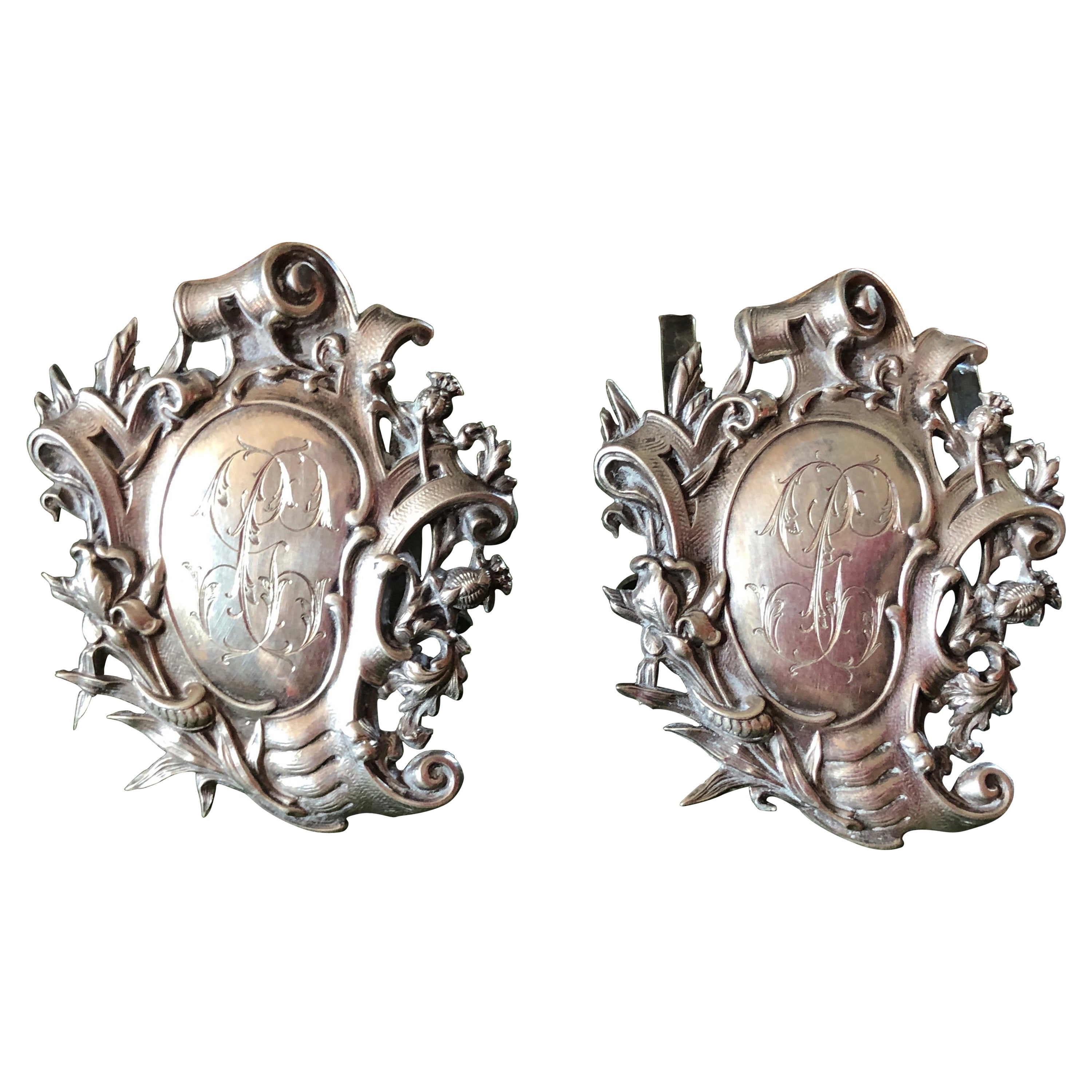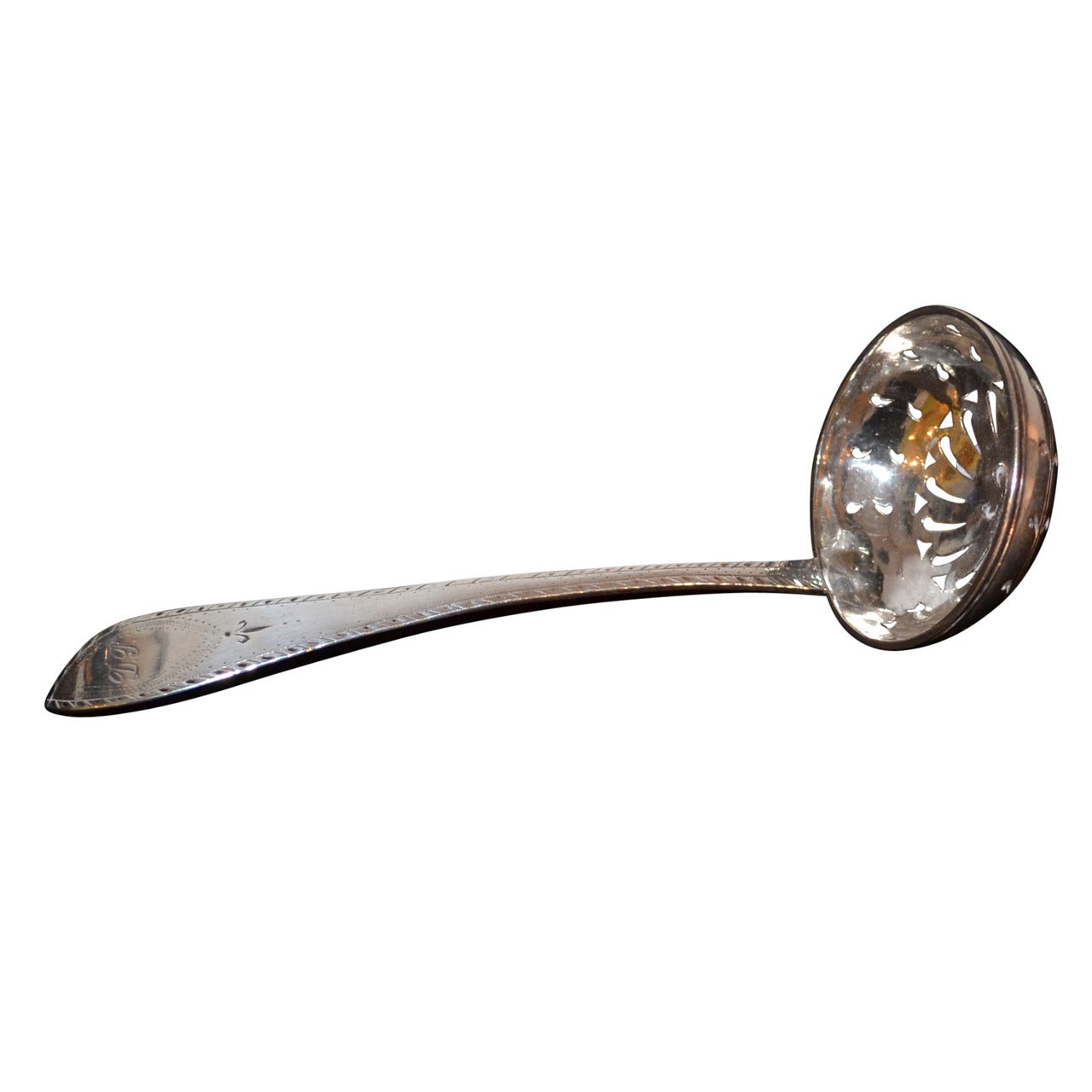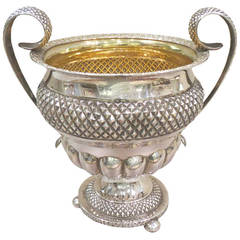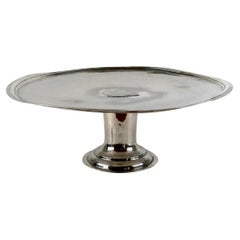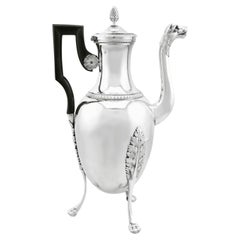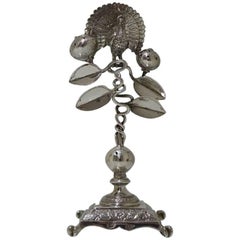
19th Century Antique Silver Portuguese Tooth Pick Holder Porto, circa 1845
View Similar Items
1 of 8
19th Century Antique Silver Portuguese Tooth Pick Holder Porto, circa 1845
About the Item
You May Also Like
- Portuguese Silver Sugar Bowl, First Half of the 19th CenturyLocated in Torino, ITBombe' chased circular form with scroll handles gilt interior on pedestal. Marked underneath, Portugal, 1820. Measures: 19.5 cm. depth. 14.5 cm. width. 19.0 cm. height. 474 gm.Category
Antique 19th Century Portuguese Sterling Silver
MaterialsSilver
- Antique Rare Early Portuguese Porto Solid Silver Sterling Tazza 40cm SalverLocated in London, GBA Rare Early Portuguese Solid Silver Sterling Tazza in very good condition, hammered silver. Circular top on a tapering flared based foot. There is an armorial to the middle of the...Category
Antique Early 18th Century Portuguese Rococo Sterling Silver
MaterialsSterling Silver
$3,875 Sale Price20% OffFree Shipping - Antique 19th Century French Silver Coffee PotLocated in Jesmond, Newcastle Upon TyneAn exceptional, fine and impressive, large antique French silver coffee pot. This exceptional antique French silver coffee pot has a ...Category
Antique Early 1800s French Serving Pieces
MaterialsSilver, Sterling Silver
- Antique Dutch Silver Marriage Cup 19th CenturyLocated in London, GBThis is a charming antique .835 silver marriage cup, with Dutch hallmarks, circa 1880 in date. Condition: In excellent condition with no dings, dents...Category
Antique 1880s German Sterling Silver
MaterialsSterling Silver
- 19th Century Italian Sterling Silver Madonna, circa 1830Located in Milano, ITEmbossed and engraved silver plaque La Madonna del lago (The Madonna of the Lake) Probably Milan, post 1824 Brass frame It measures 16.14 in x 13.85 in (41 x 35.2 cm) and it weighs 10.357 pounds (4.698 g): silver 1.31 pounds (598 g) + brass 9.03 pounds (4.100 g) State of conservation: some abrasions on the bottom. The frame is old, but not original. The plaque is made up of a sheet of embossed and engraved silver, and held in a solid brass frame. It depicts the “Madonna del lago” – “Madonna of the Lake” - (the Madonna with Child and San Giovannino) by Marco d'Oggiono (Oggiono, 1474 circa - Milan, 1524 circa), while changing only the background landscape. Almost certainly the subject reproduced in the plaque was taken from a famous engraving by Giuseppe Longhi (Monza, 1766 - Milan, 1831), one of the greatest engravers of his era. The silver is unmarked, probably because originally the Madonna was due to be exposed in a church: sometimes precious metals destined for worship and liturgical use would be exempted from payment and were, therefore, not marked. It is very likely that the plaque was made in Milan because in this city in 1824 the engraving by Giuseppe Longhi was made and printed. In addition, in Milan, the alleged lost painting by Leonardo da Vinci in his Milanese period (1482-1500) would be produced; this is the painting from which Marco d'Oggiono took his version. The painting Marco d?Oggiono was one of Leonardo da Vinci's most brilliant students and collaborators (D. Sedini, Marco d’Oggiono, tradizione e rinnovamento in Lombardia tra Quattrocento e Cinquecento, Roma 1989, pp. 151-153, n. 56; p. 225, n. 124, with previous bibliography). His style reflects in every way that of the Tuscan Maestro, so much so that he was the one who executed some copies of da Vinci's paintings. The execution of the “Madonna del Lago” probably draws inspiration from a lost painting by the Maestro, created while he was living in Milan (1482-1500). There are many similarities with other works by Leonardo such as the “Vergine delle rocce” or the “Vergine con il Bambino e San Giovannino, Sant’Anna e l’Agnello”. The painting, from which the drawing and then the famous engraving were taken, is found today at the M&G Museum of Bob Jones University in Greenville, South Carolina, where it came to rest after the sale of the Harrington Collection in London in 1917. The work appears in the inventories of the collection of Napoleon and Joséphine Bonaparte at the castle of Malmaison, before 1809. The Malmaison building was born and developed in the 17th and 18th centuries. In the 18th century it belonged to Jacques-Jean Le Coulteux du Molay, a wealthy banker. Later, during the Directory, Joséphine Bonaparte de Beauharnais bought it on April 21st, 1799, but settled at the castle definitively only after her husband separated from her in 1809. She remained there until 1814, the year of her death. When Joséphine died, the estate passed to her son Eugène de Beauharnais, who moved to Munich with his whole family in 1815, bringing with him the collection of paintings he inherited from his mother. Eugène died in 1824 and his wife Augusta of Bavaria (von Bayern), unable to keep it, in 1828 sold the Malmaison to the Swedish banker Jonas-Philip Hagerman. It is likely that in this period Augusta also sold part of the paintings inherited from her husband, including the “Madonna del Lago”. This painting then came into the possession of Leicester Stanhope, fifth Earl of Harrington (1784 - 1862) and then was passed down to his descendants. In 1917, at the death of Charles, eighth Earl of Harrington, his brother Dudley inherited the title and properties and he put up a part of his collections for sale. Among these, precisely, the painting by Marco d'Oggiono was to be found. On the occasion of that auction the painting was presented as a work by Cesare da Sesto, by virtue of a handwritten note by the Countess of Harrington on the back of the table. However, already in 1857, the German critic Gustav Waagen had identified Marco d'Oggiono as the author of the painting, then exhibited in the dining room of Harrington House in London (Treasures of Art in Great Britain, in 4 volumes, London, 1854 and 1857). The engraving Giuseppe Longhi was one of the most renowned engravers in Italy between the end of the 18th century and the first quarter of the 19th century. In 1824 Giuseppe Longhi, based on a design by Paolo Caronni, made a famous engraving of the painting of Marco d?Oggiono. The activity of Longhi was then at the peak of his notoriety, enough to earn him very substantial commissions; it is not risky to suppose that some of his successful engravings were also reproduced using other means: in our case in silver. (A. Crespi, a cura di, Giuseppe Longhi 1766–1831 e Raffaello Morghen...Category
Antique 1820s Italian Neoclassical Sterling Silver
MaterialsSterling Silver, Brass
- Silver Spoon, 19th CenturyLocated in Paris, FRSolid silver spoon, 19th century. Shell-shaped spoon, floral pattern on the handle. Hallmark Minerva. Weight : 110gCategory
Antique 19th Century French Serving Pieces
MaterialsSilver

